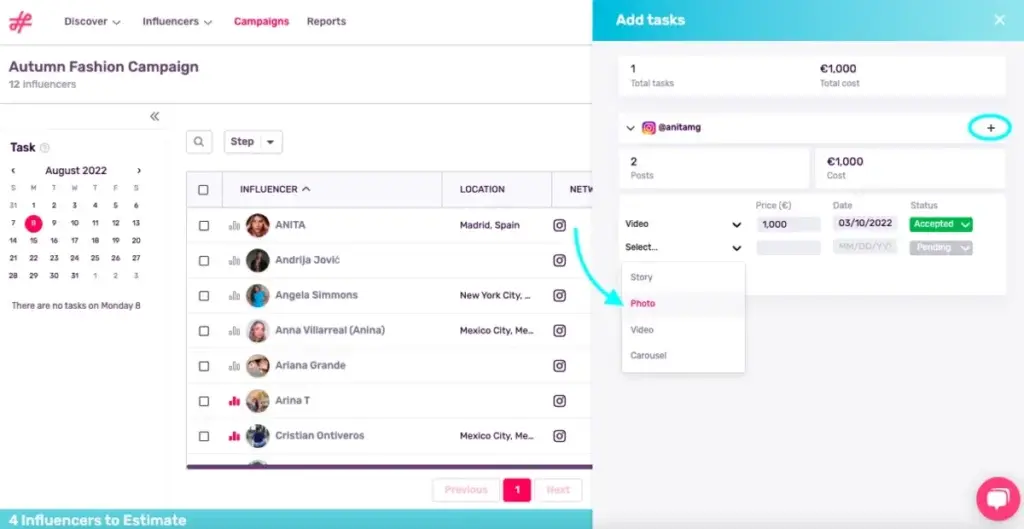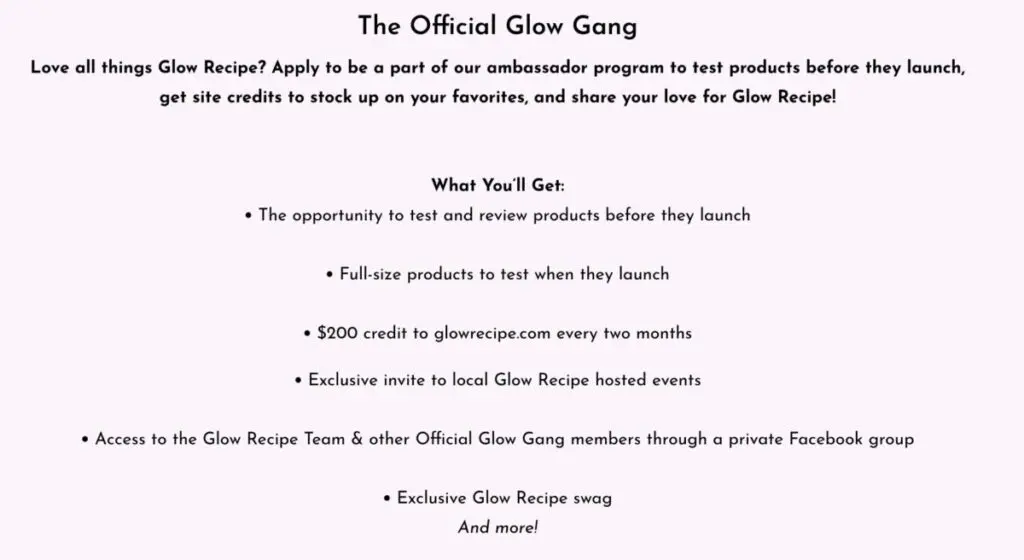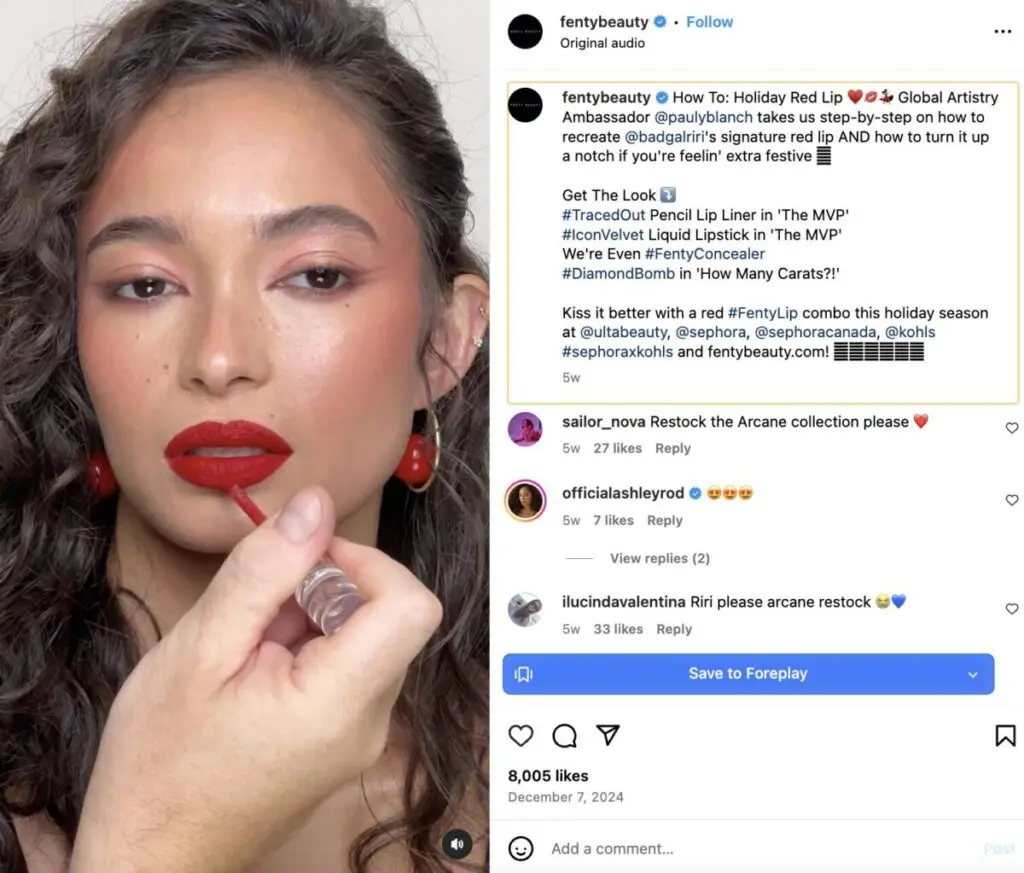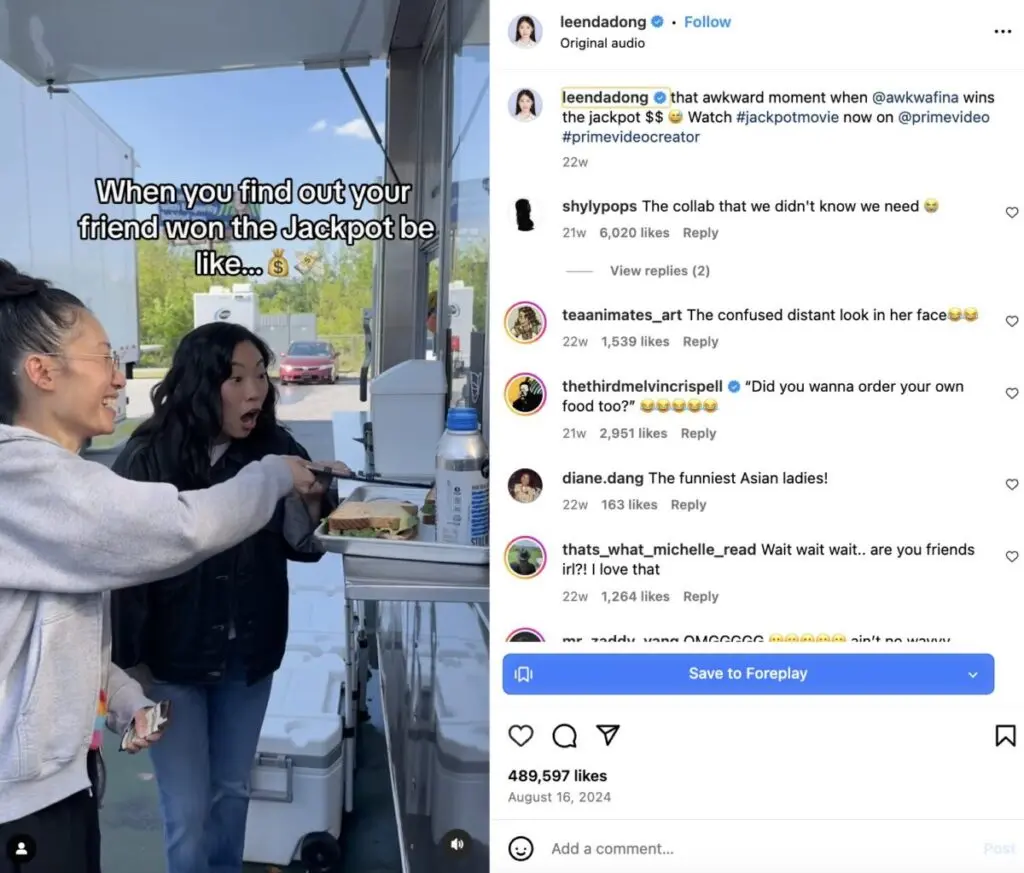With the increasing maturity of influencer marketing, marketers are getting a better hang of how to navigate the landscape. Yet recent data reveals that they still struggle with the influencer management side of things. According to our State of Influencer Marketing Benchmark Report, activities like processing payments (17.1%) and managing contracts and deadlines (13.9%) were some of the most notable challenges faced by those who run campaigns in-house.
Beyond these, managing relationships with influencers is another challenge all on its own. This post addresses some of the key influencer management challenges and provides you with a guideline on how to manage influencers effortlessly. Let’s take a look.
Strategic Planning for Effective Influencer Management
Before diving into the actual management process, you need a strategic plan for your campaign. This serves as the foundation for managing your campaign and the influencers you work with.
Define Your Campaign Goals with Precision
Start with a clear idea of the goals you wish to achieve from your campaign. This will guide various aspects of your influencer management, including deliverables and payment terms. For instance, if you have a very specific goal of generating $x worth of sales, you can structure your incentives in a way that will encourage influencers to generate more sales.
When setting your goal, make sure to consider what you want to achieve as a business. This will help you align your campaign with broader marketing objectives like lead generation or brand awareness.
Prioritize Audience Fit Over Follower Count
Larger influencers may have good reach, but they’re not always the easiest to manage what with existing obligations and other brand partnerships. Significant delays in correspondence and deliverables are common.
So instead of follower count, the focus should be on audience fit. Does the influencer resonate with your brand’s target audience? The more relevant an influencer is for your brand, the more likely you are to connect with them. This will also simplify the influencer management process to a significant extent.
Our October Influencer Marketing Report also noted a significant shift in how marketers choose influencers. Now 53.4% of marketers are showing a preference for nano-influencers.
Avoid a One-Size-Fits-All Approach
If you’re leveraging different types of influencers in your campaigns, it’s also important to tailor your strategies to each type instead of relying on the same strategy across the board. This includes setting up different partnership and payment terms, deliverables, and feedback processes for different influencer types.
For instance, you could recruit nano-influencers into an influencer gifting program while larger influencers may receive one-time payments for their posts. This will ensure that influencers are fairly compensated for their contributions without taking a huge toll on your marketing budget.
While a one-size-fits-all approach may seem more straightforward at first, it could create complications further down the line. Inconsistent results, higher costs, and dissatisfied influencers are just a few examples.
Creating a Framework for Influencer Collaboration
Having a solid framework to use for your influencer collaborations will simplify multiple aspects of influencer management. Here are the three key considerations to include in your framework.
Set Clear Expectations from the Start
When influencers have a clear idea of your expectations, there’s a lower risk of miscommunication and conflict. It reduces the need to go back and forth and encourages a more straightforward collaboration.
Be Explicit about Deliverables
Clearly outline the deliverables that you expect from influencers. Include details like:
- Content format
- Platform
- Number of content pieces
- Posting schedule/frequency
- Hashtags and social tags
- Links and landing pages
- Discount codes
- Calls-to-action
Make sure to be as explicit as possible to prevent any ambiguity. Do you want them to highlight a specific benefit or offering? Are there certain words or verbiage you want them to use?
Be Upfront about Payment Terms
Provide clarity on payment terms to minimize confusion and guide your own payment process. Specify details like:
- Payment amount
- Payment schedule
- Mode of payment
- Currency (in case of global campaigns)
Make sure to include details about any contingencies in case of delayed or incomplete deliverables. For internal reference, don’t forget to specify who’s in charge of processing payments and what approval workflow they should follow.
Streamline Your Influencer Onboarding
The onboarding process sets the ground for your partnership, so it needs to go smoothly to ensure a seamless collaboration. This step involves guiding influencers on how to communicate and collaborate with your team.
Centralize Communication Channels
Using different social media platforms and email channels to communicate with influencers can complicate influencer management. Not only will you struggle to keep up with the conversations, but you may have a hard time tracking messages within the platforms.
Instead, make use of dedicated tools like Slack to centralize your communication. This makes it easy to communicate in real time with team members and influencers, allowing you to reduce misunderstandings and quickly get the info you need. Meanwhile, project management tools like Asana make it easier for every party to stay aligned.
Additionally, you can use the built-in communication and project management tools within influencer marketing platforms to further streamline the process. For instance, platforms like Influencity let you assign tasks to influencers and keep track of them in one place.
Provide a Collaboration Roadmap
Having a roadmap in place makes it easy for everyone to stay on track with their respective delivery timelines, allowing you to seamlessly work together with influencers. It reduces the risk of delays and long lead times since the schedule for different activities are clearly laid out.
Share a timeline that includes milestones for submitting content drafts and making edits. Make sure you include schedules for internal processes like reviews, feedback cycles, and final approvals.
Build Feedback Loops
Feedback loops are crucial for making continuous improvements to your influencer campaigns. They help you identify and address key challenges to facilitate a more impactful partnership.
Establish Checkpoints
Ongoing reviews help you address any potential roadblocks that could disrupt workflow and affect the outcome of your campaign. Set specific dates to review progress and create an opportunity to address any challenges that influencers may be facing. Regular checkpoints allow you to solve issues before they snowball into a bigger problem further along in your campaign.
Encourage Two-Way Input
Your communication with influencers should go beyond one-way feedback. To foster a thriving partnership, you need to build mutual trust and accountability. Give them the opportunity to share insights and suggestions on campaign direction and content strategy.
Remember that most influencers are content creators first. This gives them valuable expertise on how to better connect with their audience.
How to Strengthen Relationships with Influencers
Successful influencer management is more than just working with influencers. It’s also about establishing a relationship with them to build an authentic partnership. Let’s look at some best practices to strengthen your influencer relationships.
Focus on Transparency and Trust
Your relationship with influencers is only as good as your willingness to be transparent with them. Transparent communication is crucial to build trust, which serves as the foundation for a strong relationship.
Be Open about Campaign Goals
If you need influencers to truly “own” the campaign, they need to feel like they’re part of the bigger picture. Make sure to share the “why” behind each campaign so they know what you’re working toward. This provides them with essential context to creatively put together content that aligns with your goals.
Say you’re trying to raise awareness after a rebrand. If the influencer knows this, they could creatively frame their wording and content to reflect the rebrand.
Provide Context for Feedback
Speaking of context, your feedback should also include the “why” behind your criticism. Tie your feedback to shared objectives, such as brand consistency or audience engagement. Be constructive so influencers can know exactly what’s wrong with a certain piece of content or a certain approach, and how to fix it.
Recognize and Reward Effort
One of the key steps to strengthening your influencer relationships is by making your influencers feel valued. Recognize the effort they put into your partnership and reward it appropriately.
Give Incentives Beyond Payments
While monetary payments are great, they could make your partnership feel mostly transactional. Offer additional benefits beyond money to improve their affinity for your brand. Perks like early access to new products and exclusive event invites could make them feel like they’re truly a part of your brand.
Glow Recipe rewards creators in their “Glow Gang” with exclusive perks not available to regular customers. These include free products, early access, free merch, and exclusive invites to the brand’s hosted events.
Involve Them Through Co-Creation Opportunities
Creativity is the biggest value that influencers offer. Acknowledge this by involving them in your content brainstorming sessions. Not only do you get to take advantage of their creativity, but you also make them feel valued and integral to the brand’s success.
The result? Awesome content and invested influencers, which only lead to successful campaigns.
Evolving Influencer Relationships
One-off campaigns typically result in short-term gains. For your influencer partnerships to deliver a bigger impact in the long run, it’s important for your relationships to grow and evolve with time.
Build Ambassadorships
Foster a long-term relationship with your best influencers through brand ambassadorship opportunities. Identify the highest-performing influencers in your campaign and recruit them as brand ambassadors. As ambassadors, these influencers can help foster deeper audience trust while offering consistent representation for your brand.
Expand Influencer Types
The great thing about influencer marketing is you don’t have to rely on the same influencer types over and over again. Scale your campaigns by experimenting with different influencer tiers and expand your influencer roster based on your goals.
Looking to build trust? Consider getting nano- and micro-influencers to test and review your product. Need to exponentially grow brand awareness? Amplify your message with a few mega-influencers or a single celebrity influencer.
Encourage Cross-Promotions
Influencers can significantly boost reach and engagement when they work together. Encourage your influencers to collaborate and amplify your campaign impact. Consider Instagram Collabs where the content can show up in both their feeds and collectively garner reach and engagement from each account. Or you could have creators feature other influencers in their content to drum up audience engagement.
Navigating Difficult Situations in Influencer Management
Working with other people often comes with complications. Even with your influencer partnerships, you’re likely to experience a few difficult situations that are hard to navigate. Let’s check out a few tips on how to manage them.
When Deliverables Fall Short
Marketers often have to deal with influencers missing deadlines or delivering subpar content. These situations can prove to be highly risky to navigate as they can affect campaign success and influencer relationships.
Missed Deadlines
Have a contingency plan in place to manage delays in content submission. For instance, keep your posting windows flexible to account for possible delays. You could even have influencers on standby to produce backup content. If you’re consistently facing an issue with influencers missing their deadlines, make sure to get to the root cause.
Did you set an unrealistic timeline? Or were you unclear with your communication?
Subpar Content
There may also be instances where influencers fail to deliver the quality of content you expected. When this happens, provide constructive criticism with specific instructions on how to meet the expected standards. You can even use your brief as a reference to illustrate where they failed to meet expectations.
Resolving Conflicts
Sometimes, conflict may arise due to creative differences. In worst case scenarios, businesses may also have to solve issues related to contractual obligations.
Address Creative Disagreements
If there are any disputes with creative direction, take care to find a middle ground that satisfies your brand goals as well as influencer needs. Avoid being too restrictive with your creative requirements but provide enough guidelines to ensure that your goals are met.
Legal and Contractual Conflicts
Sticking to the terms outlined in your agreement is the best way to avoid legal trouble. If any issues arise, however, maintain professionalism to protect your brand reputation. Involve legal counsel if necessary so you don’t dig yourself deeper into a hole that’s difficult to get out of.
Knowing When to End a Partnership
In spite of your best efforts, some partnerships just weren’t meant to be. When this happens, it’s best to know when to cut your losses instead of getting stuck with an influencer who isn’t right for your brand.
Red Flags to Watch for
A toxic influencer relationship manifests through various signs:
- Missing deadlines repeatedly
- Having to follow up multiple times every time
- Delivering subpar content consistently
- Regularly failing to implement feedback
- Conflicting values
- Being involved in a serious controversy
Exit Gracefully
Even when you’re terminating your influencer partnership, it’s important to do so gracefully. Make sure to pay all dues promptly so they don’t have to keep following up. Offer constructive feedback so they know what needs improving. If appropriate, you could also leave the door open for future collaborations.
Legal and Contractual Best Practices for Effective Influencer Management
In most cases, effective influencer management is all about following best practices for contracts and negotiations.
Create Contracts That Work for Everyone
Your influencer contracts should be fair and mutually beneficial. They should also contain all the minute details of your agreement to clarify any uncertainties and reduce the risk of future disagreements. These include details about:
- Deliverables
- Payment terms
- Intellectual property rights
- FTC responsibilities
Check out our influencer contract template for a more comprehensive list of things to include.
Avoid Common Pitfalls
Beyond the basics, you should also include clauses to address common causes of misunderstandings. Explicitly state who holds usage rights for content created for the campaign and how the content can be reused. Specify any requirements for exclusivity and confidentiality that influencers need to maintain. Make sure to include termination clauses in case either party wants to end the partnership.
Simplifying Negotiations
To streamline your negotiation process, start with a clear idea of what you need and what you can afford. This will serve as a guideline when negotiating terms that work for everyone involved.
Start by asking influencers for their rates, so you can decide if negotiation is an option. Be prepared with a clear idea of the maximum you can pay for influencers negotiating a higher fee. If necessary, you could also adjust deliverables and perks to come up with a mutually beneficial agreement.
Manage Influencers Like an Expert
With various moving parts involved and the unpredictability of human relationships, influencer management is no easy feat. The tips and best practices highlighted above serve as a guideline to streamline the whole process. You can even leverage influencer relationship management tools to simplify and automate various aspects of influencer management.









